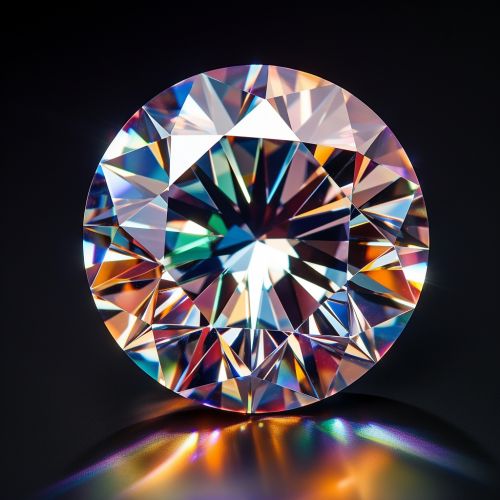Quantum Computing with Color Centers in Diamond
Introduction
Quantum computing is a rapidly growing field that promises to revolutionize the way we process information. One of the most promising platforms for quantum computing is the use of color centers in diamond. These defects, or "color centers", can be manipulated and read out using optical techniques, making them ideal for use in quantum computing.


Color Centers in Diamond
Color centers in diamond are defects in the diamond lattice where a carbon atom is replaced by a different type of atom or a vacancy. These defects can absorb and emit light of specific wavelengths, giving the diamond its color. The most well-known color center in diamond is the nitrogen-vacancy (NV) center, which is formed when a nitrogen atom replaces a carbon atom and an adjacent vacancy in the diamond lattice.
The NV center has a ground state with spin S = 1, which can be split into three sublevels (m_s = 0, ±1) by a magnetic field. This spin state can be manipulated by microwave radiation and read out optically, making the NV center a good candidate for a quantum bit, or qubit.
Quantum Computing with Color Centers
Quantum computing with color centers in diamond is based on using the spin state of the color centers as qubits. The quantum state of a qubit can be manipulated by applying microwave pulses, and the resulting state can be read out optically.
One of the main advantages of using color centers in diamond for quantum computing is that they can operate at room temperature. This is in contrast to many other quantum computing platforms, such as superconducting qubits or trapped ions, which require extremely low temperatures to operate.
Another advantage of color centers in diamond is that they are highly isolated from their environment, which makes them less susceptible to decoherence. Decoherence is a major challenge in quantum computing, as it can quickly destroy the delicate quantum states that are used to perform computations.
Challenges and Future Directions
Despite the many advantages of using color centers in diamond for quantum computing, there are also several challenges that need to be overcome. One of the main challenges is the difficulty of integrating color centers into scalable quantum computing architectures. This requires precise control over the placement and orientation of the color centers, which is currently a major technical challenge.
Another challenge is the relatively low coherence times of color centers compared to other quantum computing platforms. While the coherence times of color centers are much longer than those of many other types of qubits, they are still not long enough for many quantum computing applications.
Despite these challenges, the field of quantum computing with color centers in diamond is rapidly advancing, and many researchers are optimistic about its future. With continued research and development, it is hoped that color centers in diamond will play a key role in the development of practical quantum computers.
